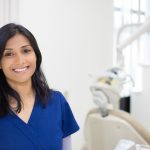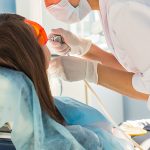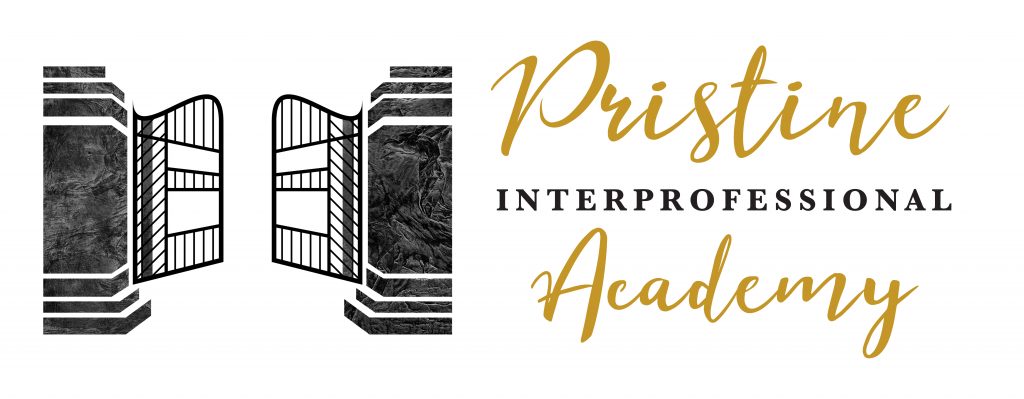
Optical Oral and Systemic Solutions
What is your call to action?
Kandra Sellers, RDH, BA
Over 100 years ago, Dr. Charles Mayo of the Mayo Clinic made an important discovery. “He found that people who had kept all or most of their teeth for a lifetime lived 10 years longer than those who had lost their teeth.” (reference?) In December of 2005, the American Journal of Preventative Medicine reported progressive risks associated with tooth loss. There was a 21% increase incidence of heart disease among patients missing one to five teeth, and 60% increase when missing six to 31 teeth, and 81% increase in heart disease for patients with no remaining teeth. The list of related medical and dental conditions is growing. Studies have only solidified that tooth loss and oral infection can be indicative of existing ailments you may not even be aware of such as diabetes, stroke, high cholesterol, low birth weight babies due to premature birth, as well as many other medical conditions. If you are hearing this message for the first time, I would consider taking massive action in getting educated on this topic. If you are hearing this again, what are you as a dental professional doing about it? It is time to get into the 21st century and take the stance that you have an opportunity to save lives! After all most people see the dentist more than they see their medical doctor, and only about 30% of people say that they have a dentist that they see regularly. No wonder chronic diseases are so out of control in America! We as dental professionals have allot of work to do in educating patients about this connection of oral health to their systemic health. It is time that we take a medical approach to each and every one of our patients in order to truly take the very best care of them and create a shift in the dental profession. So, what can you do to enhance the patient experience and start truly being a advocate for your patients health?
Typically, medical histories are quickly reviewed and completely updated infrequently. Many times we ask the patient the question, “has anything changed with your medical history since your last visit”, however, most of the time we get the response, “no” …end of conversation. Many patients do not remember what medications they are taking, the dosage, nor do they understand why they are taking them. It is critical we know what medications they are on and how they interact with the patient’s overall health. A large percent of medications have a significant impact on salivary flow, which changes oral health significantly. It is up to us to research and find out what it is used for and what the side effects are. It is up to us to ask thought provoking questions, steer away from yes or no questions, that shut down interactive communication. Ask better questions and we will get better answers. This is nothing that should be rushed through, this could impact our treatment, the outcome of our treatment, and their investment that they are making in their oral health. We have to make sure our medical histories include every organ and body part. It is imperative to ask questions related to sleep apnea due to this being life threatening…. if we don’t ask, the patient is not going to just bring it up in a quick overview, in fact if they snore they are likely not going to bring it to your attention at all because they may be embarrassed. Asking great questions in this interview process will allow you to understand the patient’s medical history and risk factors for chronic diseases, allowing you to customize treatment to their needs, not just being a cookie cutter dental practice.
Along with review of the medical history, taking blood pressure is a must. All dental professionals were trained to do this during your schooling, however, many stop once you start practicing…. WHY? This is one of the easiest ways to look in to the patient’s systemic health. This protocol should not only be for hygiene patients, but for operative as well. There are many risks for medical emergencies if you are using local anesthetic or nitrous oxide on a hypertensive patient…do you want to take that risk? Most practices I work with, that start taking blood pressures on all patients, as part of their protocol, are amazed at how many patients are hypertensive and had no idea, or knew and are not controlled. I hear many stories of how they feel they are saving their patients’ lives with this one simple screening tool, what a great feeling.
Periodontal disease is an infection which causes inflammation throughout the entire body, which leads to many illnesses as well as how well those illnesses are controlled. Many times when I start coaching a dental practice their periodontal percentages are less than 10%, when we know the statistics are that approximately 50-80% of the adult population has some form of periodontal disease. In simple calculations, if you have 1,000 patients, potentially 500-800 of them may have infection and bacteria infiltrating through their blood stream and causing inflammatory markers to go off the charts. Not only is this earth shattering, or should I say life threatening, to your patients, it is also the reason why so many practices are not profitable…they are picking and polishing every day, letting an inflammatory disease go untreated and undiagnosed….by the way this is the number one reason you put license at risk for a lawsuit…do I have your attention now? Consider developing a solid periodontal protocol to kick this percentage to where it should be. Take the stance that bleeding and infection of any kind is not ok in your practice!
Many chronic diseases are directly correlated to nutrition, even periodontal disease. We have had nutritional counseling in our CDT codes for as long as I can remember, however, rarely do I see this code being utilized or even discussed. America is facing epidemic highs with many chronic conditions, which are in direct conflict with trying to maintain the oral health. Take for example type II diabetes, this can in most cases be controlled by diet, yet this is an epidemic in America. The AAP stated in April of 2014 that periodontal disease surpassed diabetes by over 65 million people! I would recommend you and your team educate yourselves on nutrition and start talking with your patients about this, so that we can stop these epidemics that are sweeping through America. There are scanners, that are fast and easy to use chairside to evaluate the patient’s nutritional level through evaluation of antioxidants and oxidative stress levels. This leads into further discussion on free radicals and how well patients can fight cancer, as well as start the discussions on nutrition. This also gives you a measurable tool to help you monitor your patient’s success, as well as giving them individualized recommendations.
The other things that is very easy to do and helps us better treat patients with a customized approach is by using blood test that test for inflammatory markers or by using a simple salivary test, which can test for risk factors for inflammatory disease, periodontal disease, cardiac risk factors and diabetes. With the same one-time salivary sample you can also test for HPV, metabolic rates and get a customized treatment plan for periodontal disease. All of this information is critical to long term care and recall intervals to helping you treatment plan appropriately, have your patients retain their teeth for a life time and live longer.
Are you using advanced screenings devices to evaluate for oral cancer? Many believe this technology is new and that still in a trial phase, when the exact is opposite. The use of fluorescence technology has been used for years in the medical field. In fact, my mom had lung cancer. While they were removing one of right lobes, they used this fluoresces technology to check the other lobes for cancer cells. This protocol among the medical field has been long standing. By the time we are able to see oral cancer visibly, it is typically a stage four diagnosis, with a poor survival rate beyond 5 years. Oral cancer is one of the top 10 cancers, surpassing cervical cancer. In part, this increase is due to the HPV virus, which is spreading rapidly. I once read that approximately 80% of college students would test positive for HPV. This is no longer a cancer that affects only people who are elderly, use tobacco or alcohol. In fact, 25% of patients will have no risk factors…and again this is in large part due to the HPV virus. We need to ensure we are doing a complete head and neck exam intraorally and extraorally to ensure there are no lumps, bumps or lesions. Fluoresce devices actually shows the lesion below the top surface of the tissue, allowing us to detect cell changes in it’s earliest stages. Some devices on the market, such as Velcope , allow you to take a picture showing exactly what you see with the use of the fluorescence. Education is important for you and your patience, I would highly recommend reviewing this website, oralcancerfoundation.org. This will give you, your team and your patients a phenomenal resource to tap into. Again, having strong protocols and educated team members in your practice is critical.
Another clinical shift is in the way we perform our preventative care appointments. Many of us who have been in the industry for as long as I have, know air polishing all to well. It used to be messy, taste bad and only used supragingival. Imagine a new process by which we can use this subgingival to destroy all biofilm prior to any hand instrumentation, eliminating the bacteria that will enter the blood stream during our procedures. The use of an air-polisher with glycine powder, is safe and comfortable for our patients, and makes it even easier for us as clinicians. Following the air polishing you would use an explorer to feel for any calculus, then the ultrasonic to remove it. You would then follow this by hand instrumentation. Because of the use of the glycine powder prior to the preventative therapy, unless the patient had excessive stain, then a sodium bicarbonate may be necessary, you would not have to polish. Patients love this because they do not leave feeling the crunchy sand feeling of conventional polishing. This will save you time, and allow time for the other adjunctive services I have discussed. Patients love technology and to make their cleanings easier. It is important that you have high quality sharp instruments from manufactures with proven scientific data to back up their product and have shown long term integrity. This will allow you to perform at your best to ensure a long term healthy career.
Many of these ideas are most likely prompting some questions of how much extra time this will take and how you are going to do more, and not get paid for it. Yes, you have a business to support. I am sure you can also relate to having many patients that have moderate to large treatment plans. Medical insurance should be utilized. Billing medical insurance first, if there is medical necessity, and then billing their dental insurance secondarily, will allow patients to treat all of their disease in their mouth. I have seen in several practices that patients are on a 5 year plan because the practice and patient are in the mindset that insurance will only cover $1500 per year. Think about how this could change the perception and the benefits to your practice and significantly affect your bottom line in a very positive direction…and most importantly taking extraordinary care of your patients. Let’s not leave all that disease in our patients mouth to fester and only make their systemic health decline. How crazy is that?
It all comes down to having great protocols in place for optimal oral and systemic solutions in your practice. We are the only medical professionals that spends an extended length of time looking in the mouth. We have the opportunity to diagnose diseases, such as caries and periodontal disease all day long. And with this shift in mindset to medical vs. dental you are able to evaluate your patients at a whole different level. As a clinical hygienist, I had many patients that I insisted they see their medical doctor because their periodontal condition was not improving with my intervention. These patients ended up being diagnosed with type II diabetes, leukemia, breast cancer, oral cancer and pancreatic cancer. Starting to screen at advanced levels will allow you as a dental professional to elevate your medical screening of your patients and help reduce risk factors that could cause fatalities. Let’s raise the bar together and start saving lives, while getting paid for it! It is a win-win! What actions do you commit to taking?
Optimal Oral and Systemic Solutions
ALL Articles


Optimal Oral and Systemic Solutions…what is your call to action?

Flu Season… Why Is This Any Different Than An Infection In The Mouth?

